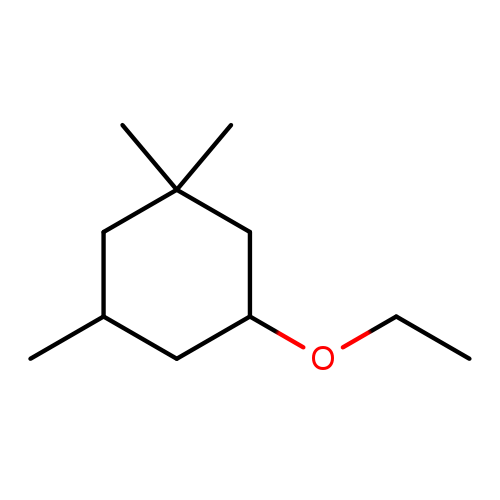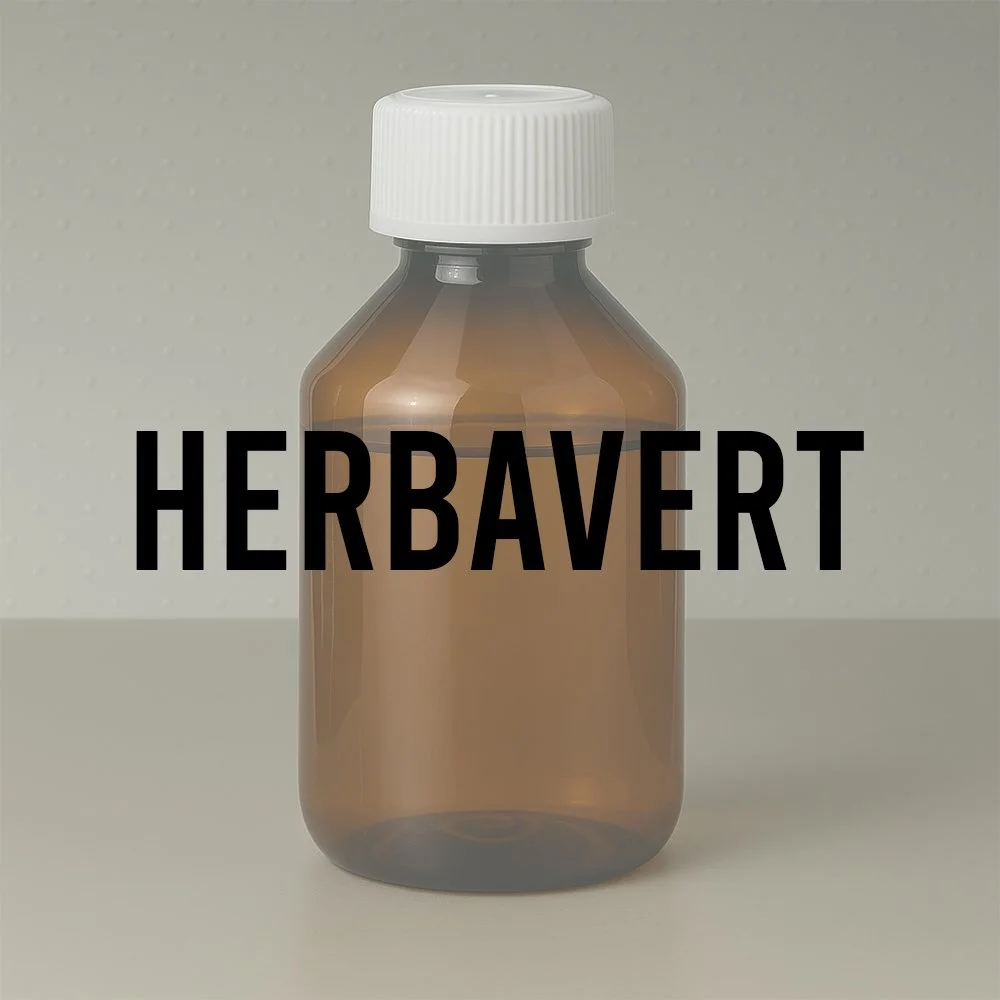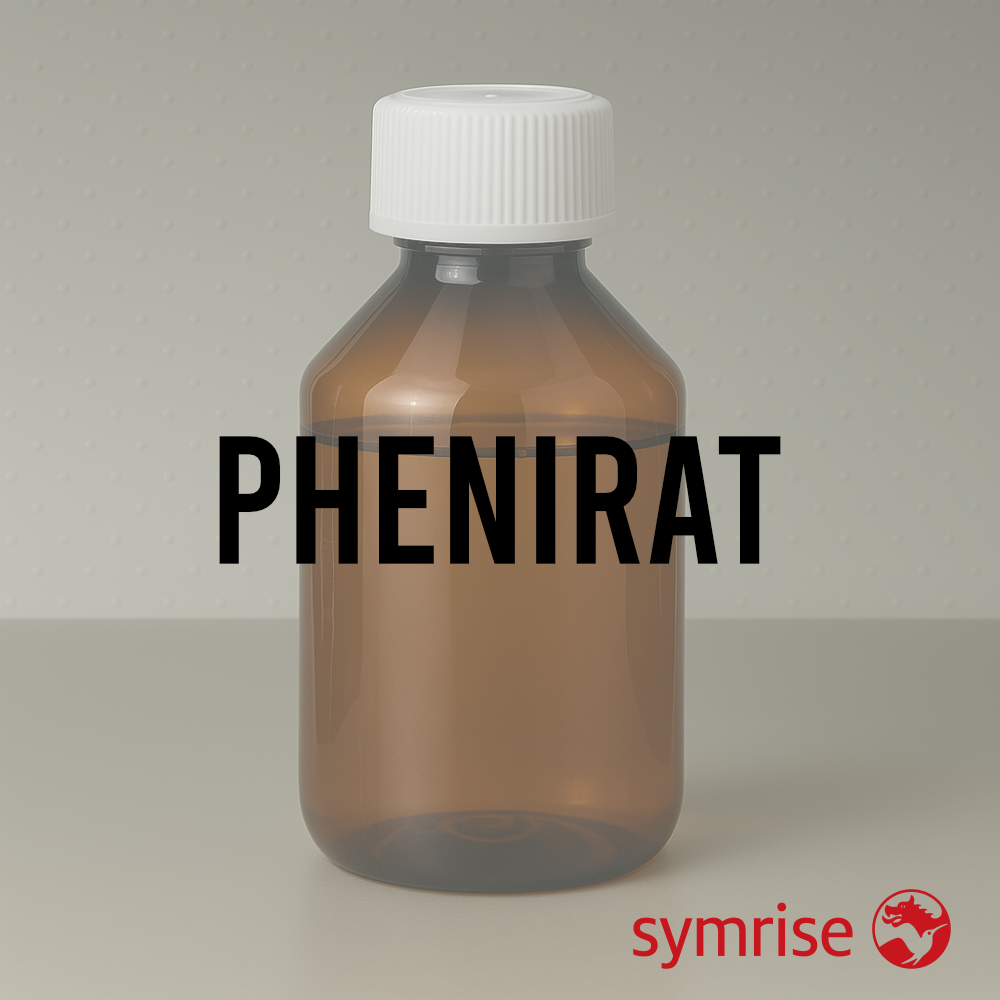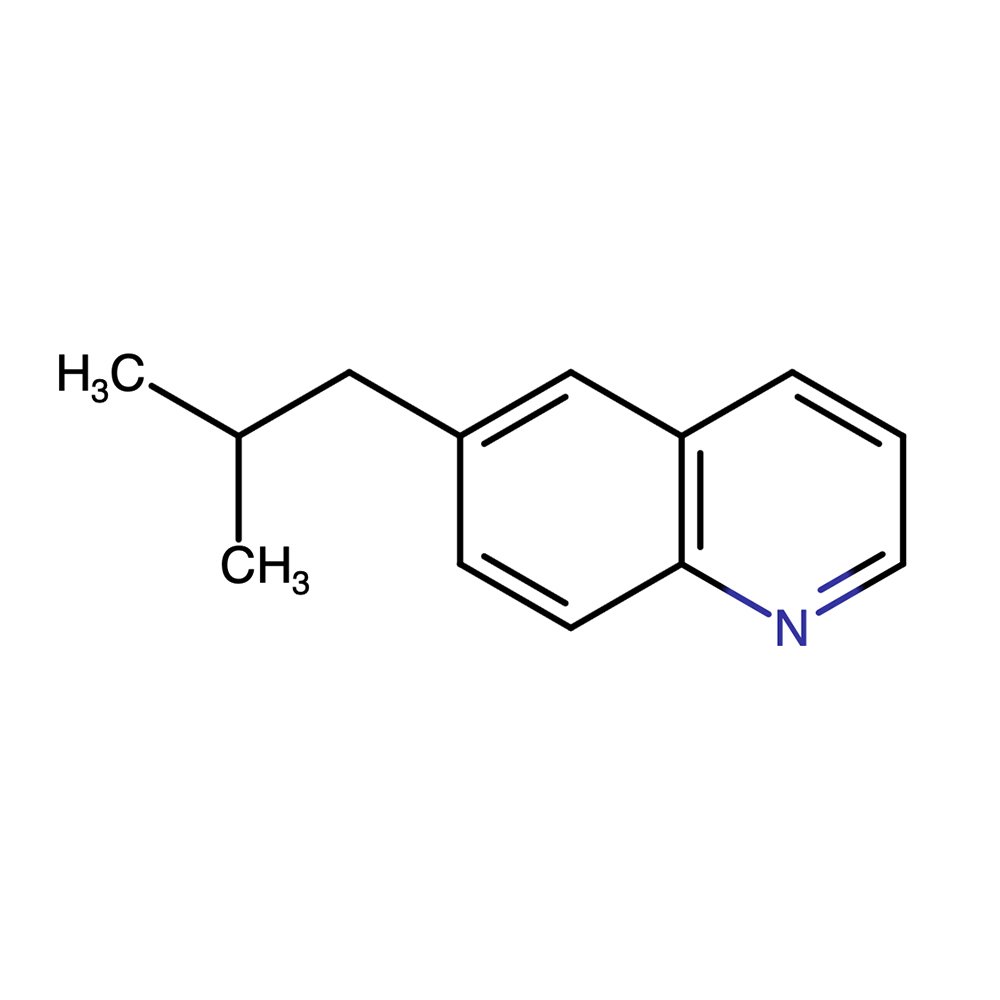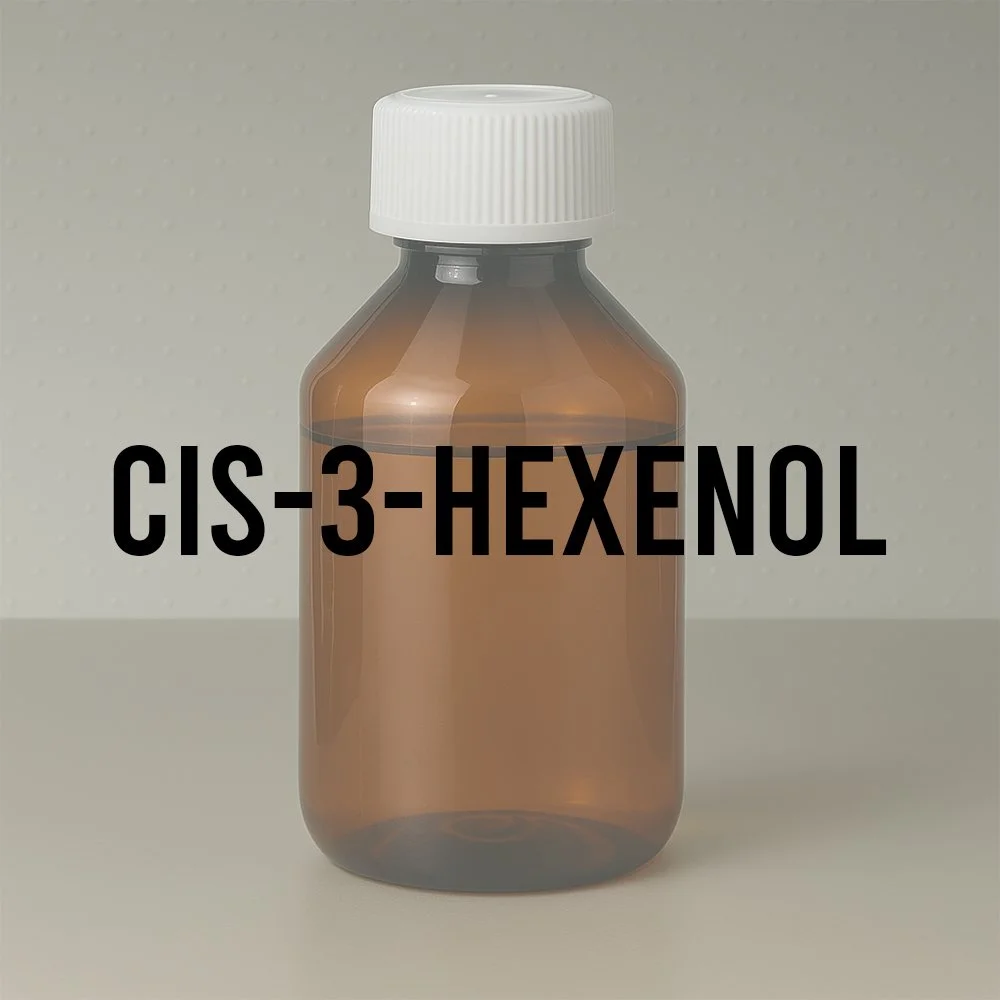Technical Ingredient Overview
🏭 Manufacturer — Kao Corporation (Kao Chemicals Europe)
🔎 Chemical Name — 3-Ethoxy-1,1,5-trimethylcyclohexane
🧪 Synonyms — Herbavert, 3,3,5-Trimethylcyclohexyl ethyl ether, Ethyl 3,3,5-trimethylcyclohexyl ether, Herbal cyclohexane
📂 CAS Number — 67583-77-1
📘 FEMA Number — Not registered (not approved for flavor use)
🧬 Chemical Formula — C₁₁H₂₂O
⚖️ Molecular Weight — 170.29 g/mol
📝 Odor Type — Fresh, Green, Herbal
📈 Odor Strength — High impact on top note; Medium overall strength
👃🏼 Odor Profile — Sparkling fresh, diffusive, rubbery-camphoraceous, mentholic, herbal-green with dynamic evolution to fruity apple-floral and soft rosy nuances in drydown
⚗️ Uses — Herbal note booster, floral-fruity top note enhancer, fougère modifier, aromatic compositions, functional perfumery
🧴 Appearance — Clear, colorless liquid
What is Herbavert?
Herbavert is a synthetic fragrance ingredient belonging to the alicyclic ether chemical family, specifically classified as a substituted cyclohexyl ether. Developed and commercialized by Kao Corporation through their specialty chemicals division, it represents a modern approach to creating fresh, green olfactory effects without relying on traditional terpene-based materials. The molecule features a cyclohexane ring system substituted with three methyl groups at positions 1, 1, and 5, and an ethoxy group at position 3, creating a conformationally flexible structure that contributes to its unique olfactory evolution (Bauer, Garbe, & Surburg, 2001).
Unlike naturally occurring green materials such as cis-3-hexenol or leaf aldehydes, Herbavert offers superior stability in alkaline and oxidative environments, making it particularly valuable for functional perfumery applications where traditional green materials might degrade. The molecule's synthetic origin allows for consistent batch-to-batch quality and eliminates seasonal availability concerns associated with natural extracts.
Historical Background
Herbavert was first introduced to the international fragrance community at the World Perfumery Congress (WPC) held in Nice, France, in 2018. The material was presented by Kao Chemicals as part of their expanding portfolio of specialty fragrance ingredients designed specifically for modern perfumery challenges, particularly in the functional and fine fragrance sectors requiring high diffusion, short-lived top notes, and compatibility with diverse product matrices.
The development of Herbavert reflects Kao Corporation's broader commitment to innovation in sustainable chemistry and biodegradable specialty chemicals. As of 2025, the material remains proprietary to Kao, with production centered at their European facilities. The introduction of Herbavert coincided with increasing industry demand for fresh, natural-feeling top notes that maintain performance in challenging formulation environments such as high-pH detergents and oxidative bleach systems.
While specific patent information for Herbavert's synthesis route has not been publicly disclosed in accessible literature, the molecule's structural design suggests influences from earlier work on cyclohexyl ether fragrance materials, including research on cyclohexyl phenethyl ethers and related substituted cyclohexane derivatives explored in the late 20th century for their fixative and aromatic properties.
Olfactory Profile
Scent Family
Primary Classification: Fresh Green / Herbal
Secondary Classification: Fruity-Floral. Camphoraceous, Mentholic
Main Descriptors
Herbavert exhibits a complex, multi-phase olfactory profile that evolves significantly over time:
Initial Phase (0-8 minutes):
Sparkling, diffusive freshness
Rubbery-camphoraceous brightness
Mentholic coolness (without tactile cooling effect)
Cineole-like herbal green character
High volatility and strong projection
Middle Phase (8-20 minutes):
Transition to softer herbal-green profile
Reduction in camphoraceous aspect
Emergence of natural vegetative notes
Maintained diffusion with decreasing intensity
Late Phase (20-90 minutes):
Dominant sweet fruity character
Apple blossom reminiscent accord
Soft rosy-floral nuances
Similarity to materials like Verdox (Givaudan) in the drydown
Gradual fade to clean, subtle finish
This dynamic evolution distinguishes Herbavert from static green materials and makes it particularly valuable for compositions requiring olfactory interest throughout the evaporation cycle.
Intensity
Top Note Impact: Very High (powerful initial diffusion)
Overall Strength: Medium to Medium-High
Detection Threshold: Not published; estimated to be in the low ppb range based on diffusion characteristics
Substantivity: Low to Medium (~90 minutes on blotter)
Tenacity
Longevity on Blotter: Approximately 90 minutes to 2 hours
Performance Class: Top note with brief heart note contribution
Fixative Value: Minimal; not recommended as a fixative material
Persistence in Formula: Enhanced when combined with less volatile materials
Volatility
Classification: High volatility
Note Position: Primarily top note with transient heart note qualities
Evaporation Rate: Rapid initial evaporation with gradual tapering
Comparative Volatility: Similar to cineole, faster than linalool, slower than dihydromyrcenol
Applications in Fine Fragrance
Herbavert finds diverse applications across fragrance categories, particularly where fresh, natural-feeling green notes are desired without the potential instability of leaf alcohols or aldehydes.
Role in Fragrance Compositions
Primary Functions:
Top Note Amplifier: Enhances brightness and diffusion of opening accords
Green Modifier: Adds natural, vegetative freshness to floral and fruity themes
Freshness Booster: Provides immediate impact in aromatic fougère structures
Transition Agent: Facilitates smooth evolution from top to heart notes through its own dynamic profile
Typical Usage Levels:
Fine Fragrance: 0.5-3% of the concentrate
Functional Fragrance: 1-5% of the concentrate
Soap/Detergent: Up to 5% depending on application
Typical Accords and Combinations
Herbavert demonstrates excellent compatibility and synergy with multiple fragrance families:
Green-Fresh Accords:
Liffarome + Herbavert (1:1): Sparkling vegetable-green tone with enhanced diffusion
Rose Oxide + Herbavert (1:1): Fresh rosebud nuance with metallic-green brightness
Violet Leaf Absolute + Herbavert (10:1): Natural cucumber-green depth with fruity lift
Fougère and Aromatic Systems:
Iso Bornyl Acetate + Herbavert (4:1): Bright, soft floral-herbal opening
Menthol + Herbavert (9:1): Balanced fresh-sweet contrast without excessive cooling
Terpinyl Acetate + Herbavert (19:1): Sweet-aromatic opening with bergamot-like character
Tetrahydrogeraniol + Herbavert (9:1): Fresh floral uplift with rosy undertones
Terpineol + Herbavert (19:1): Sweet lime-like impression with herbal complexity
Fruity Accords:
Verdox + Herbavert (4:1): Juicy apple-peel effect with enhanced realism
Hedione + Herbavert (20:1): Transparent floral-fruity with jasmine nuances
Linalool + Herbavert (10:1): Soft lavender-fruity with increased freshness
Floral Structures:
Muguet (Lily of the Valley) compositions
Apple blossom accords
Fresh rose top notes
Hyacinth and narcissus themes
Performance in Formula
Behavior in Blends and Mixtures
Chemical Stability:
Excellent stability in alcoholic solutions (ethanol-based perfumes)
Good stability in dipropylene glycol (DPG) and related solvents
Compatible with most synthetic aroma chemicals
No known reactivity with common fragrance ingredients
pH Tolerance:
Excellent: pH 7-13 (neutral to alkaline)
Good: pH 5-7 (mildly acidic)
Poor: pH <4 (strongly acidic systems)
Oxidative Stability:
Excellent resistance to oxidation in the presence of:
Perborate-based detergents
Peroxide systems
Chlorine bleach (at appropriate concentrations)
Thermal Stability:
Stable under normal storage conditions (15-25°C)
Maintains integrity during standard heating processes in formulation
No significant degradation observed in accelerated aging studies under normal conditions
Impact on Overall Composition
Diffusion and Projection:
Significantly increases the perceived diffusion radius of a composition
Creates an immediate olfactory presence ("first impression" impact)
Enhances the "naturalness" perception of green-floral fragrances
Blending Smoothness:
Acts as a "blender" for disparate notes
Softens transitions between contrasting olfactory elements
Reduces the "sharpness" of certain aldehydes and nitriles
Perceived Quality:
Contributes to a modern, clean aesthetic
Provides a "premium" feeling through its complexity and evolution
Supports naturalistic fragrance concepts
Industrial & Technical Uses
Non-Fragrance Applications
While Herbavert is specifically designed for perfumery, its chemical structure and properties make it theoretically suitable for:
Flavor applications (though not FEMA-approved)
Odor masking in industrial products
Research applications in olfactory neuroscience
Industrial Processes and Functions
Functional Perfumery:
Herbavert demonstrates exceptional performance across diverse product categories:
Excellent Stability:
Heavy-duty laundry detergents (perborate-based systems)
Light-duty powder detergents (peroxide-based)
Abrasive cleaners and multi-purpose cleaning formulations
Automatic dishwashing detergents (high pH, high temperature)
Good Stability:
Chlorinated dish liquids (moderate chlorine concentrations)
Fabric softeners (cationic surfactant systems)
Alkaline hard surface cleaners (pH 10-13)
Industrial degreasers
Moderate Stability (data pending full validation):
Shampoos and hair care (pH 5-7)
Soap bars (pH 8-10)
Body washes (pH 5.5-7)
Not Recommended:
Strongly acidic systems (pH <4)
Products containing high concentrations of strong oxidizing agents beyond normal use levels
Heat-activated systems exceeding 60°C for prolonged periods
Technical Specifications and Requirements
Storage Recommendations:
Store in tightly closed containers
Ambient temperature range: 15-25°C
Protect from direct sunlight
Avoid prolonged exposure to strong acids
Shelf life: 24 months under recommended conditions
Handling Precautions:
Standard perfumery lab safety protocols apply
Adequate ventilation recommended during blending
Avoid skin and eye contact (standard GMP practices)
No special protective equipment required beyond standard lab coat and safety glasses
Quality Control Parameters:
Purity: ≥95% by GC
Appearance: Clear, colorless liquid
Odor: Characteristic fresh, green, herbal
Specific gravity: Not published (estimated 0.90-0.95 at 20°C)
Refractive index: Not published
Regulatory & Safety Overview
IFRA Status
IFRA Amendment 51 Classification: No restrictions under standard use conditions
Usage Levels: No maximum concentration limits specified by IFRA
Product Categories: Approved for all fragrance product categories per IFRA standards
Special Considerations: None required
Note: Always verify current IFRA standards at https://ifrafragrance.org/priorities/ingredients/ifra-transparency-list as amendments are periodically updated.
EU Cosmetics Regulation
EC Number: 266-722-5
REACH Status: Not classified as hazardous under REACH Regulation (EC) No 1907/2006
CosIng Database: Listed for use in cosmetic products
Allergen Declaration: Not required to be listed on cosmetic labels (not among the 26 regulated fragrance allergens)
FEMA Status
FEMA Number: Not assigned
GRAS Status: Not affirmed; not approved for food or flavor use
Regulatory Position: Herbavert is intended solely for fragrance applications and should not be used in flavor or food contact applications
Toxicology
Safety Profile (based on available data):
No evidence of skin sensitization in standard testing protocols
No irritation concerns reported in normal use concentrations
No mutagenic or genotoxic effects observed in preliminary screening
Routine safety testing by Kao Chemicals prior to commercialization
Recommended Safety Practices:
Follow standard good manufacturing practices (GMP) for fragrance ingredients
Maintain adequate ventilation in formulation areas
Use standard personal protective equipment (lab coat, safety glasses)
Avoid prolonged or repeated skin contact with undiluted material
Consult Safety Data Sheet (SDS) for complete safety information
Regulatory Compliance:
Complies with EU Cosmetics Regulation (EC) No 1223/2009
Meets IFRA Standards for safe use in fragrance applications
Suitable for products intended for export to major markets (US, EU, Asia)
Industry Trends and Sustainability
Market Trends
Herbavert aligns with several current industry trends:
Consumer Preferences:
Demand for "natural-feeling" synthetic ingredients
Interest in fresh, clean fragrance profiles
Preference for transparent, recognizable scent signatures in functional products
Formulation Trends:
Shift toward high-performance materials for functional perfumery
Need for stable ingredients in increasingly complex product matrices
Focus on short-cycle freshness with extended olfactory interest
Regulatory Environment:
Increasing scrutiny on natural materials (allergen content, sustainability)
Preference for well-characterized synthetic materials with clear safety profiles
Industry movement toward full transparency and ingredient disclosure
Sustainability Considerations
Environmental Profile:
Synthetic origin eliminates pressure on natural resources
Biodegradability expected based on structural characteristics (aliphatic ether)
Production through established chemical synthesis routes
Kao Corporation Commitment: Kao Chemicals emphasizes sustainable chemistry and environmental responsibility, actively promoting:
Use of biodegradable ingredients from renewable sources where possible
Alternative technologies for long-lasting fragrance delivery
Life cycle thinking in product development
Future Outlook: As the fragrance industry continues to balance performance, safety, and environmental impact, materials like Herbavert that offer high performance with good stability and a favorable safety profile are likely to see continued adoption, particularly in functional fragrance applications where traditional natural materials face stability challenges.
Sources
Bauer, K., Garbe, D., & Surburg, H. (2001). Common fragrance and flavor materials: Preparation, properties and uses(4th ed.). Wiley-VCH Verlag GmbH. https://doi.org/10.1002/3527600205
Kao Chemicals Europe. (n.d.). HERBAVERT technical data sheet. Retrieved from https://www.kaochemicals-eu.com/our-products/herbavert-335-trimethylcyclohexyl-ethyl-ether
Kao Corporation. (n.d.). Product search: Herbavert. Kao Chemicals Global. https://chemical.kao.com/en/products/A0006002_en/
National Center for Biotechnology Information. (2025). PubChem compound summary for CID 106714, 3-Ethoxy-1,1,5-trimethylcyclohexane. PubChem. https://pubchem.ncbi.nlm.nih.gov/compound/106714
Pybus, D., & Sell, C. (Eds.). (2006). The chemistry of fragrances: From perfumer to consumer (2nd ed.). Royal Society of Chemistry.
Rowe, D. J. (Ed.). (2005). Chemistry and technology of flavors and fragrances. Blackwell Publishing.
Scentspiracy. (2018). WPC 2018 field notes and structured smelling sessions [Internal archive]. Nice, France.
